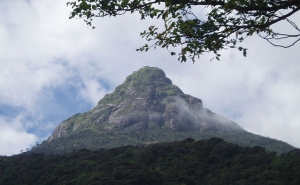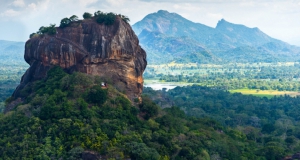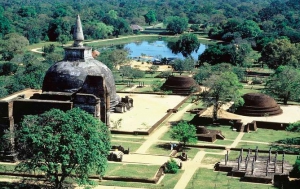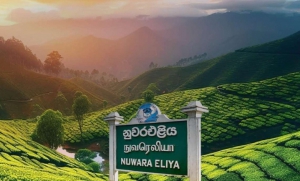Colombo
Colombo, Sri Lanka's capital on the west coast, is loud, lively and versatile. The city's architecture tells the story of the country: the Portuguese, Dutch and British have shaped the city with their architecture, and today East Asian role models such as Singapore and Kuala Lumpur are added. Anyone who visits the city experiences the hustle and bustle of a thoroughly Sri Lankan city.
Things to do in Colombo
We have listed all the cultural and culinary destinations that you can explore on a walking tour of Colombo here:
- Experience the historic center of the city on a walking tour in the Fort district: On the peninsula, which is separated from the rest of the city by canals, you will find the Old Parliament, the Clock Tower and the President's House, which is reminiscent of the White House.
- The Lotus Tower, a 320 m high tower, is Colombo's newest landmark. It is reminiscent of the important Buddha flower and is beautifully illuminated in the evening.
- Immerse yourself in the Muslim world of the Pettah bazaar. Here you can smile about one or the other product, practice trading and buy spices for your loved ones at home. The streets are full of people, stalls and hawkers – beware of pickpockets!
- The Clock Tower in Chatham Street was built in the mid-19th century and was used as a lighthouse for only 10 years. Today, although it is overlooked by the surrounding buildings, it still offers a nice photo stop amidst the eclectic architecture.
- End the day in style: in Colombo's best rooftop bar "Cloud Red Colombo". Unique view over the vibrant city, delicious cocktails in a relaxed ambience. Located on the 26th floor of the hotel "Cinnamon Red Colombo".
- For lunch or dinner, we recommend the charming courtyard of the Gallery Café. Mediterranean and Asian dishes are served, but also some Sri Lankan specialties. Here you can escape the hustle and bustle of the city, even if food and drinks are not a bargain here.
- In the late afternoon, stroll through Galle Face Green, a palm-fringed green promenade that stretches south along the sea for about 500 m from the centre. It is teeming with Sri Lankan families, business people, couples and travellers enjoying the sunset and the light breeze.
- Lake Beira consists of three smaller lakes and adjoins the district of Fort to the southeast. Every February, the Navam Maha Perahera festival takes place here, which shows visitors a huge, magnificent parade of dancers and elephants in a great setting.
- Buddhist Temples / Festivals and Mosques
Best time to travel and climate for Colombo
Hardly anyone will adapt the timing of their trip to Sri Lanka to the climate in the capital. However, you can expect that the best time to travel to Colombo is in the European winter, as it is a bit more pleasant for city tours.
In January, the coldest month, temperatures can drop to 22 degrees, and towards March temperatures rise to around 28 degrees. April and May are the hottest months, from May to November there are heavy downpours, especially in the afternoon.
Holiday tours from Colombo
To explore Colombo, a one-day stay is enough. There is so much more to see in Sri Lanka, especially when you consider the best times to travel to each region:
- From Colombo, for example, you can plan a round trip across the Dutch Canal to the kitesurfing mecca of Kalpitiya and on via Wilpattu National Park to Sri Lanka's cultural triangle.
- In the European winter, it is a good idea to continue your journey south from Colombo. The dream beaches of Bentota, the blue whales off the coast of Mirissa, the leopards in the Yala National Park and the unique rainforest of Sinharaja beckon. The cultural triangle and the highlands are also wonderful destinations in the European winter.
- Especially in the European summer, we recommend continuing your journey to Kandy (possibly by train), to the tea plantations and to the highlands around Nuwara Eliya and to the east coast of Sri Lanka to escape the southwest monsoon.












